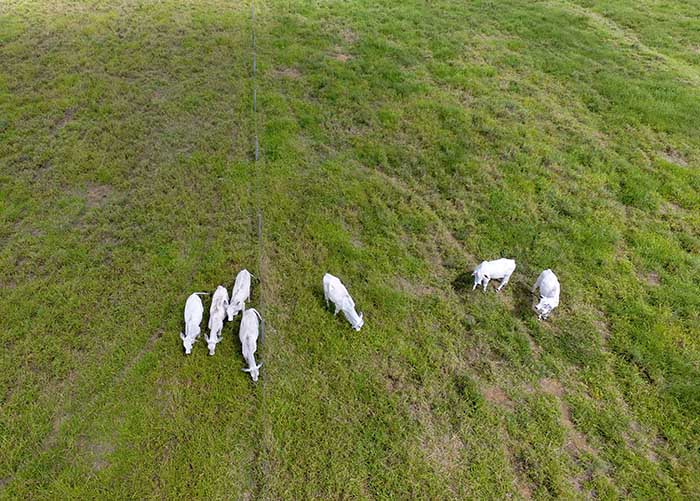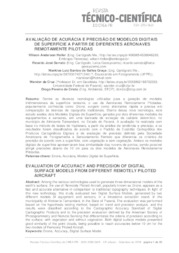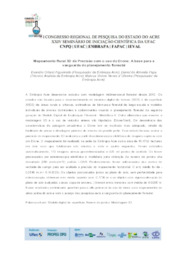Researchers to use drones to detect and count cattle
Researchers to use drones to detect and count cattle
Research coordinated by Embrapa for cattle detection and count using unmanned aerial vehicles, known as UAVs or drones, has just had funding from the São Paulo State Research Support Foundation (Fapesp). approved. The collaborative project is led by the researcher Jayme Garcia Arnal Barbedo, from Embrapa Agricultural Informatics, and it was approved in the third call for proposals of the Fapesp Program for Research on eScience and Data Science.
The activity of monitoring the cattle population is essential in the management of cattle farms. However, in large properties that adopt extensive cattle farming, which are very common in Brazil, such count requires advanced technology and methods. One of them is satellite imaging; however, besides not presenting enough spatial resolution to identify the animals individually, a presence of clouds can also compromise the monitoring.
"Aerial surveys have become a potential solution", Barbedo explains. Some of the initiatives are already being applied in farms, but there are still some disadvantages, such as high operation costs, high noise levels, and risk of accidents. That is why the researchers want to use image processing and machine-learning techniques, combined with software development and the use of drones, with the aim of generating more adequate solutions to monitor animals in the ranch.
Coordinated by Embrapa Agricultural Informatics, the other research participants are Embrapa Southeastern Livestock, the State University of Campinas College of Electric Engineering and Computing (FEEC/Unicamp) and Faculdades Metropolitanas Unidas (FMU). The project is due to last two years, beginning in February 2019, and received about R$ 175,000 in funds that will be mostly invested in the acquisition of drones and equipment for image processing.
Tests with 360-degree cameras
The project goals include the development of a methodology for cattle surveying using drones equipped with visible light spectrum cameras and the establishment of an algorithm to automatically recognize and count the cattle in the captured images. Two distinct approaches will be investigated: the first one is with the use of a conventional camera and the other, with a 360-degree camera.
The main difference between the two methodologies is that the first one generally requires multiples flights to cover large areas, while the second one can visualize much larger regions with a single flight, but it loses in terms of resolution, since the animals are more distant from the camera, according to the researcher.
Drones to estimate the herd's health and weight soon
The project aims to generate advances in the area of computer science by producing new image-based algorithms for animal detection and management, with an innovative approach to counting cattle. "This methodology can also be used in the future to work with other aspects of cattle monitoring, such as animal health, body measurements, among others", Barbedo reports.
Embrapa Agricultural Informatics will collect the images in the field and process them, creating and applying algorithms based on machine-learning principles to detect and count the animals jointly with FEEC/Unicamp. The field tests will be made with the support of specialists in animal management at Embrapa Southeastern Livestock's Canchim Farm. The researcher Andrea Roberto Bueno Ribeiro, from FMU, is also going to support the management and studies on animal behavior related to the simulations of the cattle's movement in the pasture.
Counting cattle without gathering the animals
Knowing the number of animals is essential so that farmers suitably manage their farm, contributing to their internal control and the quantification of results.
In cattle farming, variations in the herd are constant: births, deaths, sales, and even theft of of animals. All of that has consequences for the planning and the profitability of the activity.
For the count, the cattle farmer needs to gather the animals in the pasture or lead them to the corral. This process is complex and demands great effort. The difficulties increase in proportion to the size of the farm and the herd.
The cattle's displacement is always stressful and can affect the productivity. In the journey, there is a chance of accidents. Moreover, the bovines spend more time walking and not feeding, ruminating or resting, which causes economic losses to the farmer. The stress reduces weight gain and affects immunity, leaving them more vulnerable to diseases.
"The idea behind the project is to try to make this count without gathering the animals, reducing stress. However, there are some difficulties. It is necessary to train the machine to see an ox and to count them, one by one. The first difficulty is that the animal itself is in motion. The second one is that the drone needs to identify the cow below and know that it is a bovine, and not a rock, for instance or, if two animals are together, it has to be able to count two and not only one. The machine needs to learn to analyze the image", explains the researcher Patrícia Menezes Santos, from Embrapa Southeastern Livestock.
To capture the images, it is necessary to understand the behavior of the bovines. This way, the flight plan and the strategies used to capture images need to consider the animal routine, the type of farm area, the model of production system, among other husbandry and property specificities. The interaction between the experts from the two Embrapa research centers will contribute to finding the best way to teach the machines to evaluate that.
At the Canchim farm, the physical base for the tests and image capture, there are several different production models, like animals in integrated systems, in extensive pastures, intensive areas, and others. According to the Embrapa researcher, this diversity of conditions will help to train the machine. "The drone needs a lot of images with real information about what happens in the farm. Everything can turn into an obstacle at the time the images are assessed. So we are going to help as specialists in animal production", Santos explains.
The development of technological solutions based on the application of intelligent automated systems to the pastures can contribute to molding the cattle farming of the future, since the decision-making process in production systems increasingly depends on the analysis and interpretation of data and information, according to Patrícia. "The integration of information on the climate, the soil, the animals and the pasture creates opportunities for the more efficient of use of natural resources and of production factors", the researcher asserts.
Decisions about animal sales and purchases, the use of fertilizers and suplemental feed, and other management practices can be guided by such information, reducing the risk associated with the activity and increasing the sustainability of animal production systems in pastures. Advances in the field of the Internet of Things (IoT), characterized by the connection between different devices that collect and transmit data in an automated fashion, pave the way for a more digital technology-based cattle farming.
Translation: Mariana Medeiros
Nadir Rodrigues (MTb 26.948/SP)
Embrapa Agricultural Informatics
Press inquiries
informatica-agropecuaria.imprensa@embrapa.br
Phone number: +55 19 3211-5747
Gisele Rosso (MTb 3091/PR)
Embrapa Southeastern Livestock
Press inquiries
pecuaria-sudeste.imprensa@embrapa.br
Phone number: +55 16 3411-5625
Further information on the topic
Citizen Attention Service (SAC)
www.embrapa.br/contact-us/sac/



